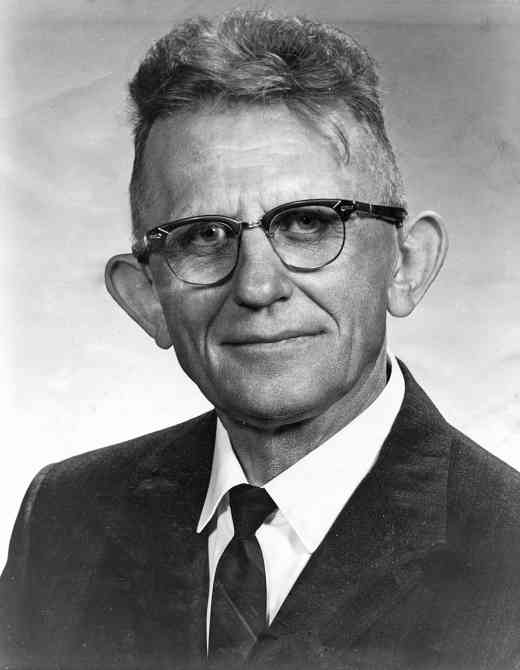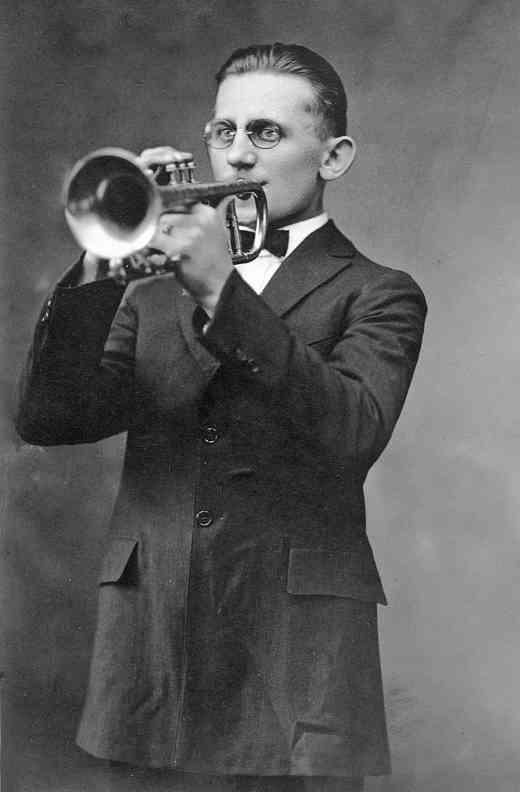Adam Lesinsky Memorial Scholarship

The Adam Lesinsky Memorial Scholarship is awarded annually to a string player for Suzuki teacher training.
Biography
Prepared by Tanya Lesinsky Carey
Adam Peter Lesinsky, a pioneer in American music education, was born on December 16 (Beethoven’s birthday) in 1893 of immigrant parents in Old Forge, Pennsylvania. He died on January 11, 1991 at the age of 97.
As a child he left school in the 7th grade to work in the coal mines as a slate picker, hipper, mule driver, and oiler. His uncle introduced him to the cornet and his natural ability soon led him to lead the Polish Falcon band in 1913 as well as his own dance band. During this time he was studying music and academics by correspondence courses. As the youngest surviving child, Adam cared for his father, who had black lung disease, until he died.
In 1916 he headed west to Valparaiso University which advertised itself as a place where the common man and woman could secure a thorough, practical education in as short a time and with as little expense as possible. There he got a GED, and two Bachelor’s degrees (he felt he needed to know more after his first) while supporting himself by playing for the silent movies, tuning the schools pianos, and eventually directing the school band.
In May of 1918 he became a sailor and was the solo cornet in the Great Lakes Battalion Band under the direction of John Philip Sousa. Having met his wife May in a Shakespeare class by passing a note saying “It is better to have loved and lost rather than never to have loved at all, ” he decided to dedicate himself to teaching rather than professional playing for the sake of the family. In the summers he played the Chatauqua Red Wing Circuit in a band conducted by his mentor, Bohimir Kryl.

Understand that there was no music education degree or music education material in those days. A teacher found the best performer he could and learned as much as he could to help his students. By 1927 his high school bands and orchestras were winning the first and second places in the national contests. This put his name and programs on the map.
He wrote and transcribed materials for teaching which are still being used including the Kayser Viola Method, 34 Viola Solos (Belwin), 80 Cello Solos (Belwin), 34 String Bass Solos (Belwin), and a sight-reading method for strings. He was one of the first teachers at the National Music Camp in the 1930’s working with Joseph Maddy and conducting the High School Band. He led the first high school band from the USA to tour Europe in 1937.
His innovative ideas earned him several patents, including one for an aluminum unbreakable frog for bows. His innovations in teaching led him to maintain a full schedule of workshops and summer courses. Other positions were at Hammond (Indiana) High School, Whiting High School (Indiana), and St. Joseph’s College (Rensselaer, IN). He helped organize and was president for 10 years of the National School Orchestra Association (1932).
At age 60 he finally had time to learn the cello. He studied with his daughter Tanya until he became blind. He progressed through Suzuki Book 6. He was honored with an honorary doctorate, and numerous awards including the Catholic Bandmasters St. Cecilia award. His life is the subject of a doctoral thesis for the University of Michigan by Millard Carlyle Hume (1971).
After caring for his wife in her declining years, he moved to Baton Rouge, Louisiana and stayed with his daughter, Nadia, to escape the harsh winters. There he continued to inspire his neighborhood of Spanish Town in the effort to renew the area with planting and beautification projects by example of his own work in his garden. Making the world more beautiful was Adam’s goal. This included nurturing the beauty he always saw in others.
Quotes
Some thoughts on education from Da Capo, an Autobiography of Adam P. Lesinsky
“Home environment is perhaps the greatest factor in a child’s education. For the most favorable learning conditions a child needs a home where there is love, culture, parental interest in the child, conversation, availability of books, music, magazines, and various learning devices for small children. This environment plus a good school environment makes an ideal situation for learning. Of course, all homes and all schools do not furnish this environment, and yet many children who do not have this ideal environment rise above their environment because they are endowed with a keen mind and a desire to learn. In the ideal environment parents read to the children just as soon as the child is able to talk. This is exposing the child to the value of being able to read and creates a desire in the child to do it himself. In many instances by the time the child is three it can start learning to read seriously. A child must not be pushed. It can be done in a playful way. Reading is the foundation of learning other subjects. Fortunate are the children who have a home environment where they can learn to read at an early age.”
“Adam was my father, my colleague, my mentor, and my friend. He supported me in all things. I feel he was my first “Suzuki” teacher (along with my mother/teacher, May). He felt every time he was with a student, the student should leave knowing one thing he did not know before. He was a master at a short lesson: concise, clear, and with a single point.
“Adam died while I was President of the SAA, an activity he supported and encouraged me in doing. I thought it would be a fitting tribute to Adam’s devotion to teaching to establish a scholarship fund in his honor to train teachers. I thought the gesture would be a start to establishing an Endowment Fund for the SAA and would eventually provide the mechanism to manage other donations and memorials. I am happy to say this has come to pass.”
—Tanya Carey, daughter
“Adam had such an even disposition—I have never known him to lose his temper, use profanity, or speak sharply to any of his students. He had a ready smile, a twinkle in his eye, and was always willing to give of his time to some young aspiring musicians. He never walked—he ran! As you no doubt know, your dad was a pioneer in public school instrumental music—a giant; he was years ahead of his time. Everything he said and did made sense. The proof lies in the endless list of top rated band and orchestras from Hammond and Whiting and just think of the impact he had on thousands of his pupils, not only as musicians but as human beings.”
—Joseph A. Lanese, former Superintendent of Music in Cleveland OH Public Schools and a former assistant to Adam in Whiting
“I would like to tell you again how much you have meant to me and how you have enriched my life. It still amazes me that one man in a small Indiana town could have touched so many lives so positively and for so many years. Not only did I take away the wonderful music you offered all of us but I so clearly remember your enthusiasm and zest for life. I remember thinking, that is how I want to live my life. I want to wake up every morning eager to face whatever life has for me and I think I’ve been able to do that because of your wonderful example. I have 3 little grandchildren now and when I look at their beautiful little faces, I think, “You have such wonders in front of you, such wonderful music that Grammy is going to introduce you to. And then I think to myself, ‘Teach would be so proud of me.’”
—Phyllis Sharp Menguy, a former violin student
